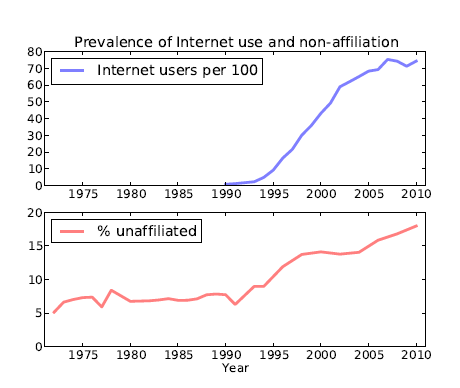 |
| Creationism - for when you want to pretend to be an expert on something you don't understand |
"Metabolic processes that underpin life on Earth have arisen spontaneously outside of cells" - words that must strike dread in the minds of any creationist fraud who depends on suckering scientifically illiterate people for a living. But those are to opening words in the above article in New Scientist.
A team from Cambridge University, supervised by Markus Ralser, has stumbled almost by accident on the startling fact that several of the basic metabolic pathways common to all living cells, and on which living things depend, can be produced spontaneously and entirely naturally.
Most models for the origin of living systems include RNA entering the scene very early on, if not right at the start of it, because RNA is the basic information store which passes information on to the next generation. RNA is important in the evolution of living things because it can self-replicate as well as catalyse organic reactions. It is normally accepted that the basic metabolic pathways are too complex to have arisen spontaneously but they are assumed to have evolved early in the history of life on Earth. These models require the earliest living things to be RNA-based so that the enzymes catalysts needed could be produced.
People have said that these pathways look so complex they couldn't form by environmental chemistry alone... If you look at many different organisms from around the world, this network of reactions always looks very similar, suggesting that it must have come into place very early on in evolution, but no one knew precisely when or how.
Now it seems these basic metabolic pathways could have simply been co-opted and incorporated by primitive proto-cells and could pre-date the evolution of RNA or even have led to it by producing RNA precursor molecules.The process was discovered when a student used a mass spectrometer to quality-check unused cell-culture medium and noticed a signal for puruvate - one of the products pf glycolysis, so they tried to replicate the production of it using a water solution believed to be like the oxygen-free oceans on Earth before the evolution of photosynthesis. They have reported their findings in Molecular Systems Biology.
Abstract
The reaction sequences of central metabolism, glycolysis and the pentose phosphate pathway provide essential precursors for nucleic acids, amino acids and lipids. However, their evolutionary origins are not yet understood. Here, we provide evidence that their structure could have been fundamentally shaped by the general chemical environments in earth's earliest oceans. We reconstructed potential scenarios for oceans of the prebiotic Archean based on the composition of early sediments. We report that the resultant reaction milieu catalyses the interconversion of metabolites that in modern organisms constitute glycolysis and the pentose phosphate pathway. The 29 observed reactions include the formation and/or interconversion of glucose, pyruvate, the nucleic acid precursor ribose‐5‐phosphate and the amino acid precursor erythrose‐4‐phosphate, antedating reactions sequences similar to that used by the metabolic pathways. Moreover, the Archean ocean mimetic increased the stability of the phosphorylated intermediates and accelerated the rate of intermediate reactions and pyruvate production. The catalytic capacity of the reconstructed ocean milieu was attributable to its metal content. The reactions were particularly sensitive to ferrous iron Fe(II), which is understood to have had high concentrations in the Archean oceans. These observations reveal that reaction sequences that constitute central carbon metabolism could have been constrained by the iron‐rich oceanic environment of the early Archean. The origin of metabolism could thus date back to the prebiotic world.
Non‐enzymatic glycolysis and pentose phosphate pathway‐like reactions in a plausible Archean ocean
Markus A Keller, Alexandra V Turchyn, Markus Ralser; DOI: 10.1002/msb.20145228 |Published 25.04.2014
One significant finding is that this process can produce ribose 5-phosphate, which is a precursor of RNA so it raises the possibility that RNA evolved later.
This research isn't conclusive, of course - there is still the problem of where the precursor sugars came from, for example. In living things nowadays, since the evolution of photosynthesis probably by cyanobacteria, sugars come from ingested food unless you are fortunate enough to be either a cyanobacterium or a green plant which has incorporated cyanobacteria in their cells as chloroplasts. But, as Ralser points out, every chemical reaction is, in principle, reversible. So, in theory, they should be capable of building sugars as well as reducing them.
Most worryingly for creationists, of course, is that once again science has closed a little gap and found that there was no magic needed and no god making things work.
'via Blog this'

















